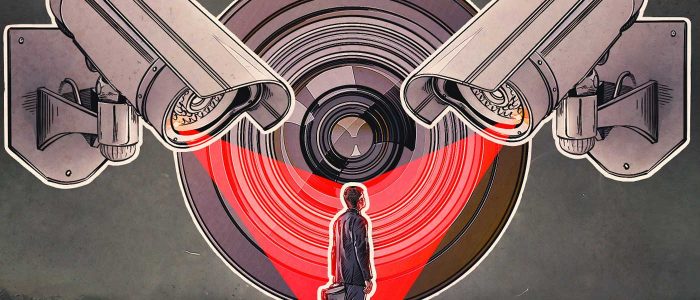Advancements in the field of Information and Technology have transformed every aspect of human life; politically, socially, economically and culturally. Despite its advantages, made use of by the common man on a day-to-day basis, individuals and entities with malicious intent have projected the darker side of technology by exploiting the vulnerabilities of technological advancements; owing to the ease in commutation, communication and access. Contrasting both aspects, the article discusses how facial recognition technology (FRT) should be regulated legally in a way that benefits of this technology can be harnessed while addressing concerns related to the probable abuses of the technology.
In simple terms, FRT refers to the ability of computer software to identify specific human faces in photos or videos. Using cloud infrastructure, FRT can identify and log facial details of individuals to process images from a computer, smartphone, or a camera. The processed data can then be used for wide ranging purposes.
FRT has proven to be advantageous and is of valuable assistance in several dynamics. Security forces and law enforcement agencies view FRT as an integral component in ‘smart surveillance’, in reference to the reduced need for intervention of human beings in the monitoring system. In India, the technology been used to locate missing children. In the United States (US), retail centers and shopping malls are using FRT to identity shoplifters in an attempt to avoid store thefts, which result in losses exceeding billions each year. The growing use of FRT in airports across the world has assisted in reducing waiting times at airports, ensured a more thorough search of suspected criminals and terrorists in a larger crowd using up less time and has prevented imposters from entering countries illegally. Additionally, experts continue to explore various domains which can benefit from FRT.
FRT has proven to be advantageous and is of valuable assistance in several dynamics. Security forces and law enforcement agencies view FRT as an integral component in ‘smart surveillance’,
Despite the proliferation of the technology and its diffusion into daily life with advantages in improving the efficiency of operations, reducing workload of security personnel thus improving security abound, there are genuine dangers and concerns associated to the use of FRT. The most pressing danger is the concern regarding the erosion of individual privacy. The unregulated use of FRT has led to violations of several human rights including the right to privacy to the freedom of speech and association. In that very context, it has given way to employee misuse. There have been several incidents about the misuse of surveillance cameras and wrongful disclosing of sensitive images having been reported.
The growing use of video surveillance has raised concerns about transforming societies on the narrative projected by the Orwellian dystopian state. Glimpses of such projection are evident in China. In other countries, issues ranging from flaws in the technology to racial biasness indicate that FRT can be used only as a source of assistance; and not to make a final judgment or form an all-round conclusion. A number of such issues have resulted in the wrongful arrest of innocent civilians, squandering the time and efforts of law enforcement agencies caught up in searching for and the conviction of the wrong people; as well as contributing to racial profiling as a result of inaccuracies in the scanning of people of colour.
In order to address dangers and concerns associated with FRT, countries need to introduce legal instruments for the use of FRT, aimed at avoiding any misuse or abuse. Similarly, states need to introduce policies with respect to video surveillance enabling the privacy of individuals to remain intact. It should be noted that the adoption of such policies will not prevent authorities from identifying criminals or terrorists.
In order to address dangers and concerns associated with FRT, countries need to introduce legal instruments for the use of FRT, aimed at avoiding any misuse or abuse.
At a micro level, regional and city authorities need to be able to provide sound reason or reasonable suspicion when they undertake the automatic tracking of cars or zoom in on individuals from distant cameras. Some American cities including Washington D.C. and Pittsburgh have issued guidelines in this respect. Regarding the retention of images, they ought to only remain stored, not for more than a week with exceptions being made in cases of reasonable suspicion or when they might be helpful in ongoing investigations and pending trials.
Other important steps that need to be taken to ensure transparency regarding the use of FRT are as follows:
- Annual evaluation of FRT and video surveillance should be undertaken and findings should be published in the form of an annual report.
- Residents need to be taken onboard when installing new cameras in their localities. In neighbourhoods marred with criminal activities, there is a need to introduce video cameras to avoid any chance of racial profiling.
- Location of all cameras should be disclosed, with an exception for hidden cameras specifically installed as part of ongoing operations against crimes and terrorism.
- All private video camera systems should also be regulated similar to public video camera systems.
- Traffic cameras should solely be used for identification of traffic violations.
Technological advancements should not be pursued at the cost of the fundamental rights enshrined in international human right treaties.
Throughout history, technological innovations have transformed various aspects of human life and will continue to do so in the future. However, technological advancements should not be pursued at the cost of the fundamental rights enshrined in international human right treaties. Tech companies should also remain cognizant of the societal impact of their technologies. With technology changing the dynamics of human life in every possible manner, there is a need to introduce legal measures to regulate the use of FRT to avoid its abuse.
